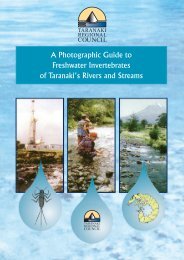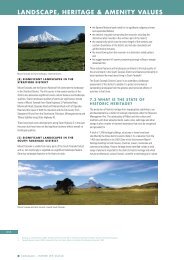Yellow Bristle Grass - The Ute Guide
Yellow Bristle Grass - The Ute Guide
Yellow Bristle Grass - The Ute Guide
- TAGS
- yellow
- bristle
- grass
- guide
- trc.govt.nz
You also want an ePaper? Increase the reach of your titles
YUMPU automatically turns print PDFs into web optimized ePapers that Google loves.
Identifi cation<br />
<strong>Yellow</strong> <strong>Bristle</strong> <strong>Grass</strong> <strong>Ute</strong> <strong>Guide</strong> 4<br />
<strong>Yellow</strong> bristle grass is an upright annual growing 25–45 cm high, although in open<br />
pasture its fi rst leaves are typically parallel to the ground. <strong>The</strong> leaves are yellowgreen<br />
to green in colour and usually red or purple at the base. <strong>The</strong>y are fl at,<br />
hairless, soft and twisted. <strong>The</strong> leaf sheath is fl attened. <strong>The</strong>re are no ears (auricles)<br />
at the junction of the leaf blade and sheath. <strong>The</strong> ligule consists of a fringe of hairs<br />
0.5–1.5 mm long.<br />
<strong>The</strong> seed head is a cylindrical ‘spike’, 2.5–10 cm long. It consists of many densely<br />
packed spikelets, with each spikelet bearing a single seed. At the base of each<br />
spikelet are fi ve to ten bristles, 5–8 mm long. Initially the bristles are green, but<br />
soon change to a golden-brown. It is the colour of these bristles that give the grass<br />
its name. Most other Setaria species have fewer bristles in their seed heads.














